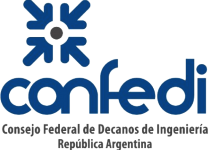Uso de un marco formal para el modelado y análisis de organizaciones
Resumen
Este trabajo presenta una visión de los fundamentos utilizados para evaluar en una forma más precisa el desempeño organizacional, identificando cuellos de botella y conflictos de desempeño, debe realizarse un análisis organizacional detallado basado en un modelo de organización formal. Además, un modelo de organización formal es la base para muchos procesos automatizados dentro de las empresas, por ejemplo la fabricación integrada por computadora; ademas de proporcionar una base para la cooperación entre sus áreas internas, e inclusos otras empresas.
Descargas
Citas
[2] Barkaoui, K., & Petrucci L. (1998). Structural analysis of workflow nets with shared resources. In W.M.P. van der Aalst, G. De Michelis, C.A. Ellis (Eds.), Workflow Management: Net-based Concepts, Models, Techniques and Tools (pp. 82–95). Lisbon: UNINOVA.
[3] Bernus, P., Nemes, L., & Schmidt, G. (Eds.). (1998). Handbook on Architectures of Information Systems Heidelberg: Springer.
[4] Bresciani, P., Giorgini, P., Giunchiglia, F., Mylopoulos, J., Perini, A. (2004). Tropos An Agent-Oriented Software Development Methodology. Journal of Autonomous Agent and Multi-Agent Systems, 8(3): 203-236.
[5] Chapurlat, V., Kamsu-Foguem, B., & Prunet, F. (2006). A formal verification framework and associated tools for enterprise modeling: Application to UEML, Computers in industry, 57, 153-166.
[6] Dalal, N., Kamath, M., Kolarik, W. & Sivaraman, E. (2004). Toward an integrated framework for modeling enterprise processes. Communications of the ACM, 47(3), 83-87.
[7] Dignum, V. (2003). A model for organizational interaction: based on agents, founded in logic. Ph.D. Dissertation, Utrecht University.
[8] Ferber, J., & Gutknecht, O. (1998). A meta-model for the analysis and design of organizations in multiagent systems. In Y. Demazeau (Ed.), Proceedings of Third International Conference on Multi-Agent Systems (pp. 128-135). IEEE Computer Society.
[9] Fox, M., Barbuceanu, M., Gruninger, M., & Lin, J. (1997). An Organization Ontology for Enterprise Modelling. In M. Prietula, K. Carley, L. Gasser (Eds.), Simulating Organizations: Computational Models of Institutions and Groups (pp. 131-152). Menlo Park CA: AAAI/MIT Press.
[10] Hannoun, M., Boissier, O., Sichman J.S., Sayettat, C. (2000). MOISE: An Organizational Model for Multi-agent Systems. In M.C. Monard, J.S. Sichman (Eds.), Proceedings of the 7th Ibero-American Conference on AI: Advances in Artificial Intelligence, LNCS 1952 (pp. 156 – 165), Berlin: Springer.
[11] Horling, B, & Lesser, V. (2005). A Survey of multi-agent organizational paradigms. The Knowledge Engineering Review, 19(4), 281-316.
[12] Hubner, J.F., Sichman, J.S., & Boissier, O. (2002). MOISE+: towards a structural, functional and deontic model for MAS organization. In C. Castelfranchi, L. Johnson (Eds), Proceedings of the 1st International Joint Conference on Autonomous Agents and Multi-Agent Systems (pp. 501-502), ACM.
[13] Koubarakis, M., & Plexousakis, D. (2002). A formal framework for business process modeling and design. Information Systems, 27(5), 299–319.
[14] Mintzberg, H. (1979). The Structuring of Organizations. Prentice Hall, Englewood Cliffs.
[15] Pinder, C.C. (1998). Work motivation in organizational behavior. Upper Saddle River, NJ: Prentice-Hall.
[16] De Raad, B., & Perugini, M. (2002). Big Five Assessment. Hogrefe & Huber.
[17] Sharpanskykh, A. (2008). On Computer-Aided Methods for Modeling and Analysis of Organizations. Ph.D. Dissertation, VU University Amsterdam.
[18] Tham, K.D. (1999). Representation and Reasoning About Costs Using Enterprise Models and ABC, PhD Dissertation, Enterprise Integration Laboratory, Department of Mechanical and Industrial Engineering, University of Toronto.
[19] Van der Aalst, W., ter Hofstede, A., Kiepuszewski, B., & Barros, A.P. (2003). Workflow patterns. Distributed and Parallel Databases, 14(3), 5–51.
[20] Zambonelli, F., Jennings, N.R., & Wooldridge, M. (2003). Developing multiagent systems: the Gaia Methodology. ACM Transactions on Software Engineering and Methodology, 12 (3): 317-370.































































